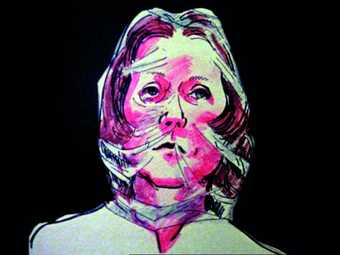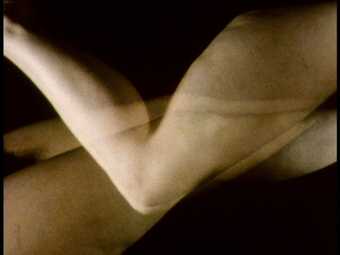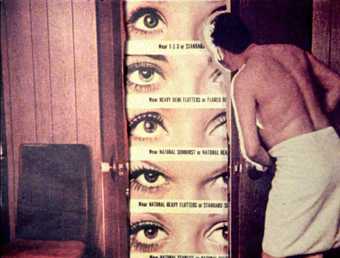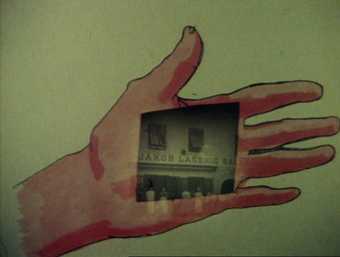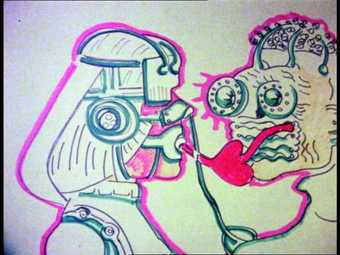Best known for her influential experiments in self-representation, Austrian artist Maria Lassnig’s 16mm films significantly extend the scope of her address to the female subject. Produced between 1971 and 1976 during her time in New York, these films bluntly yet wittily address sex and gender norms, representations of the female body, relationships and power dynamics through a diverse range of cinematic and animation techniques. The subjective nature of Lassnig’s paintings carries through in these works – her feelings, frustrations and social commentary gaining expression not only through self-portraiture but equally through the prism of animated creatures, photos and magazine cut-outs, and staged scenes.
Lassnig’s first films were created in her New York studio, using two telephone books, a glass plate and a lightbulb as a makeshift animation stand. Her animated works employ various combinations of felt-tip pen drawings, watercolours, cut-and-paste collage and sprayed stencil drawings, often integrating footage that she shot, as in Shapes (1972) and Palmistry (1974). Her live action films Iris (1971) and Baroque Statues (1970–4) use close-up shots and multiple exposures to present disjointed views of the body. Presented concurrently to the exhibition of Lassnig’s works at Tate Liverpool, this film retrospective offers audiences an opportunity to experience the breadth of the artist’s work with celluloid, movement and sound.
Programme
Selfportrait, United States / Austria 1971, 16mm, colour, sound, 5 min
Iris, United States / Austria 1971, 16mm, colour, sound, 10 min
Chairs, United States / Austria 1971, 16mm, colour, sound, 2 min
Shapes, United States / Austria 1971, 16mm, colour, sound, 9 min
Couples, United States / Austria 1972, 16mm, colour, sound, 9 min
Palmistry, United States / Austria 1973, 16mm, colour, sound, 10 min
Baroque Statues, United States / Austria 1970–4, 16mm, colour, sound, 15 min
Art Education, United States / Austria 1976, 16mm, colour, sound, 8 min
All prints courtesy sixpackfilm
The programme is introduced by Michael Birchall, Curator of Public Practice, Tate Liverpool
Biography
Maria Lassnig (1919–2014, Austria) is an artist whose career-long explorations of the body pioneered new expressions of subjective experience. She studied at the Academy of Fine Arts in Vienna during the Second World War, and in the 1950s began working closely with Arnulf Rainer and the Vienna Art Club. Lassnig relocated to Paris in the 1960s and New York later in the decade, and during this time began to focus solely on the body. She defined her approach to self-portraiture as ‘body awareness’, a method that entailed depicting only the parts of her body that she actually felt as she worked. Lassnig made a series of short 16mm films while living in New York in the 1970s, during which time she became an active member of the artist collective Women/Artist/Filmmakers, Inc.
In 1980, Lassnig returned to Austria to teach at the Vienna University of Applied Arts and represented her country at the Venice Biennale together with Valie Export the same year. She participated in documenta 7 two years later and established Austria’s first teaching studio for animated film. Her practice gained wider international recognition throughout the 1990s and 2000s, with important solo shows at the Stedelijk Museum, Amsterdam (1994); Centre Georges Pompidou, Paris (1995); the Serpentine Gallery, London (2008); and MoMA PS1 (2014).
This programme is supported by the Austrian Cultural Forum London.
Tate Film is supported by LUMA Foundation.

